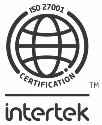What are the Real Advantages of IoT and Wearables to Insurers?

The insurance industry is undergoing a significant transformation. At the heart of this change is the integration of the Internet of Things (IoT), wearable technology, and of course, AI. These advancements are not just reshaping how insurers operate but also redefining their relationship with customers.
According to Allied Market Research, the global IoT insurance market was valued at $31.5 billion in 2022 and is projected to reach $686.9 billion by 2032, growing at a CAGR of 36.4%. This rapid growth highlights the enormous potential IoT holds for insurers, but what does this all mean in practice? INSTANDA’s Business Development Director, Andy Watts, offers his insights.
How IoT and Wearables Are Transforming Insurance
Proactive Loss Prevention
Historically, the insurance industry has been largely reactive, stepping in to provide financial support when things go wrong. However, this is changing as advances in IoT, wearables and other technologies enable insurers to take a proactive approach. These technologies allow insurers to act as preventative partners, offering advice, support, and guidance to help prevent losses before they occur. By leveraging data from connected devices, insurers can identify potential risks and provide timely interventions, ultimately reducing claims and improving customer satisfaction.
Data-Driven Insights for Personalised Products
IoT devices and wearables enable insurers to collect granular data from a wide range of sources, including telematics, smart home devices, fitness trackers and many more. This data provides valuable insights into customer behaviour, allowing insurers to create personalised policies based on individual risk profiles.
Enhancing Customer Experience
The integration of connected technologies allows insurers to offer a more seamless and engaging customer experience. By reducing friction and providing real-time support, insurers can build stronger relationships with their customers, and in turn, loyalty.
In fact, INSTANDA’s independently commissioned survey of 2,000 UK and US consumers reveals that people are happy to share their personal data (through wearables and other means) with insurers. Just over half (54%) of those surveyed said they’d be happy to share their data if it resulted in lower premiums. Download Global Report for full consumer insights
Impact on Property & Casualty Insurance
Vehicle Telematics
One of the most significant applications of IoT in the insurance industry is vehicle telematics. By monitoring driving behaviour, telematics can offer personalised premiums based on a policyholder’s driving habits. This approach incentivises safe driving, potentially reducing accidents and lowering overall claims. However, despite its potential, insurance telematic adoption remains low (at around 6%), primarily due to privacy concerns and regulatory challenges. However, there are some positive statistics of telematic adoption in fleet management. Research shows that monitoring driver behaviour can reduce commercial fleet accidents by as much as 80%, and accident claim costs by 50%.
Smart Home Devices
IoT devices in smart homes play a crucial role in preventing accidents and reducing claims. For instance, smart doorbells and cameras can deter criminals, while moisture sensors can identify minor leaks before they cause significant damage. These preventive measures not only protect homeowners but also reduce the number of claims insurers need to process.
One of INSTANDA’s US clients, Savvi Insurance, is using smart home technology to revolutionise risk prevention. With a mission of helping homeowners make their homes safer, Savvi built a comprehensive homeowners protection plan including insurance, a 10-point smart home kit, and an interactive monitoring and risk prevention app for policyholders.
Commercial Insurance Applications
In the commercial insurance space, IoT devices can help prevent large-scale losses. Vacant buildings are a good example. Let’s take a private school, for instance. Moisture sensors could detect leaks during the summer break, preventing extensive damage and costly repairs. IoT can also enhance commercial building management by providing real-time data on occupancy and environmental conditions, which, if acted upon, could reduce the risk of damage and improve underwriting accuracy.
While not strictly IoT, emerging technologies can also assist commercial customers in defending against cyberattacks. Small businesses often lack the resources needed for robust cybersecurity. Insurers can step in by offering packages that include cybersecurity apps and educational resources, helping these businesses reduce risks and prevent attacks. This proactive strategy not only adds value for customers but also transforms the traditional insurance model by decreasing the frequency and impact of claims.
The Advantages to the Insurer
By integrating IoT data, insurers can enhance both risk management and operational efficiency, ultimately reducing costs. Here's how:
Better Risk Assessment
IoT provides insurers with richer, more detailed information than ever before. This allows for:
- More accurate pricing of risk: Insurers can set more precise premiums from the start.
- Continuous monitoring: With ongoing data feeds and predictive risk modelling, insurers can identify trends to better assess risk over time, leading to fewer losses.
Operational Efficiencies
IoT data streamlines various processes within the insurance value chain, particularly claims management:
- Quick claims processing: For example, in a motor accident, telematics data from a car could reveal details like speed and braking patterns. Some newer vehicles even have the technology to recreate the scene of an accident. This removes subjectivity and speeds up claim validation.
- Less dependency on customer input: With up-to-date and accurate data from IoT devices, subjectivity is reduced from the claims process and less time is spent gathering information directly from customers.
Wearables in Life and Health Insurance
Adoption and Growth
Wearable technology is rapidly gaining traction in life and health insurance. According to Business Insider Intelligence, the number of wearables used in corporate wellness programs is projected to reach 75 million by 2025. These devices collect real-time health data, such as physical activity, sleep patterns, and heart rate, allowing insurers to create more accurate risk profiles and offer personalised policies.
Benefits for Insurers and Customers
Improved Customer Engagement
Wearables foster a more proactive relationship between insurers and customers. According to PwC, 70% of policyholders using wearables felt more engaged with their insurer. Additionally, the devices provide personalised health insights, encouraging customers to take charge of their wellbeing.
Incentivising Healthy Behaviours
Many insurers offer rewards programs for customers who meet specific health metrics tracked by connected devices. It’s not surprising given that wearables can boost physical activity levels by 30%, significantly lowering the risk of chronic diseases like cardiopulmonary disease, diabetes and hypertension. In fact, The International Data Corporation (IDC) reports that 65% of users make healthier lifestyle choices after using fitness trackers.
Enhanced Risk Assessment
Wearables provide continuous, real-time health data, enabling insurers to move beyond traditional underwriting methods. According to Deloitte, insurers using wearable data can reduce underwriting errors by up to 50%. Additionally, Accenture reports that such data can detect early signs of health issues 30% faster than traditional methods, leading to better preventive measures and fewer costly claims.
Key Benefits of Using INSTANDA for IoT Integration
Enhanced Connectivity
An insurer’s business drivers, whether they are digitalisation, simplification, embedded insurance, connecting with IoTs or working alongside existing systems, are all about connecting to the world digitally.
To realise the benefits of connected technologies, interoperability is crucial, and that’s where INSTANDA offers insurers a distinct advantage.
With its advanced open API capabilities, INSTANDA orchestrates the entire process from end-to-end, enabling connectivity with multiple technologies. The package systems from the past were all about single integrated systems. Increasingly, these systems are becoming less relevant as the end-to-end business process transcends organisational boundaries, promoting collaboration. This integration is crucial for insurers looking to offer IoT embedded insurance products that are efficient and easy to implement.
No-Code Product Configuration
The beauty of INSTANDA is that it empowers people at a business-user level to configure new products without needing to write a single line of code. This democratisation of product development is ideal for innovative insurance products as it dramatically quickens the product creation process.
Speed and Ease of Implementation
One of the standout features of INSTANDA is its ability to reduce the time required for implementation by a factor of ten. This rapid deployment capability significantly lowers the cost of integration, making it easier to justify the business case for IoT projects. Insurers can experiment with new technologies without the financial burden typically associated with large-scale implementations.
Agile Innovation and Market Testing
With INSTANDA, insurers can quickly bring IoT-connected Minimal Viable Products (MVPs) to market, test new ideas, and iterate based on customer feedback. This agility is essential in the fast-paced world of insurance, where staying ahead of the competition requires constant innovation. This iterative, cost-efficient approach helps insurers refine their offerings to better align with customer needs.
Concluding Thoughts
The integration of IoT and wearables into insurance offers numerous benefits, from proactive loss prevention and personalised policies to enhanced customer engagement and improved risk assessment. By leveraging these technologies, insurers can become preventative partners to their customers, ultimately reducing claims and improving the overall customer experience.
Ready to transform your insurance offerings with no-code policy administration and IoT? Contact us today to discuss how INSTANDA is the perfect solution for your insurance product innovation.





